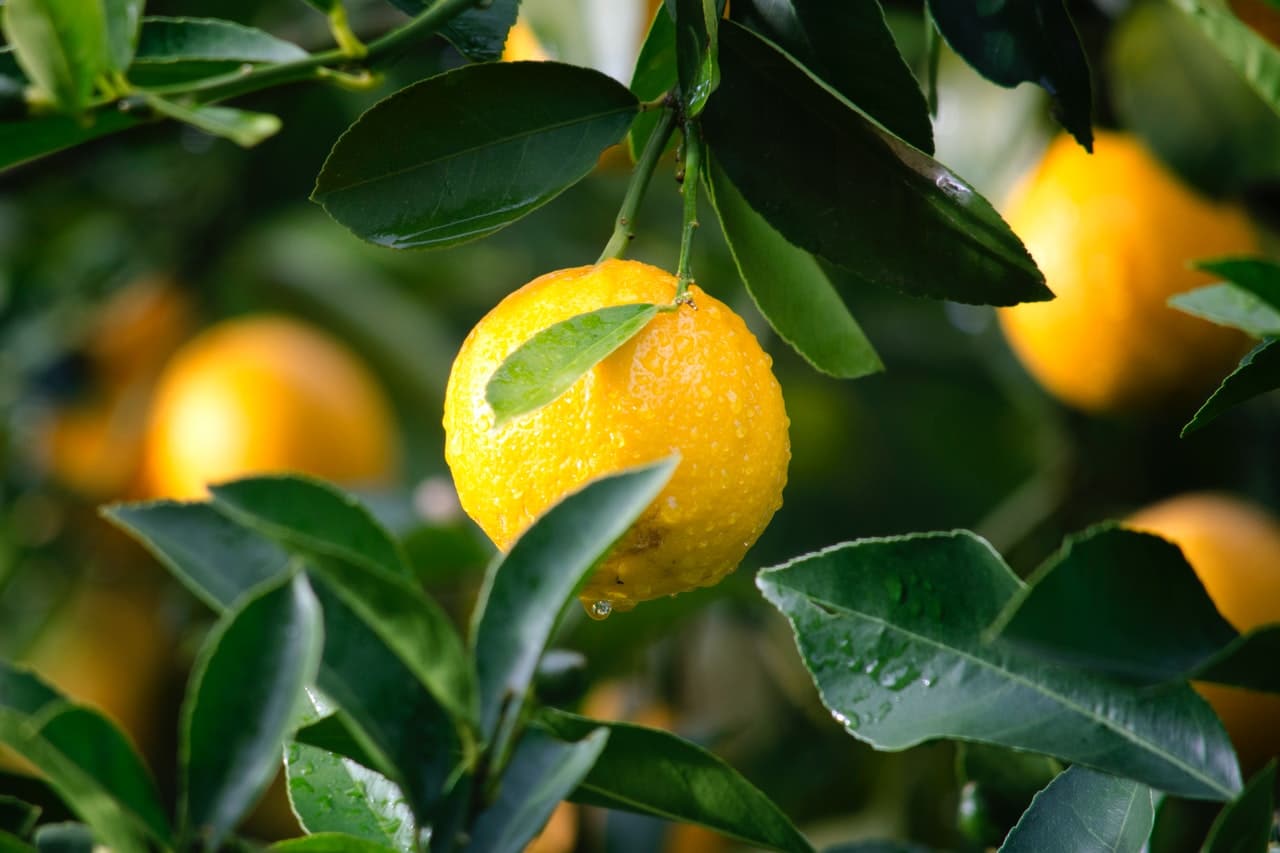Lemons have become so prevalent throughout the world that people often stop and ask – are lemons humanmade? And are lemons fruits or vegetables? Or is it a berry? What other fruits are like lemons?
The Surprising Family Tree of Lemons
Lemons come from a small, evergreen tree called Citrus limon. It is a fruit, and it is misleading to ask if it is a vegetable. Technically speaking, a vegetative part of a plant (any part, to be honest) can be called a vegetable. On the other hand, the definition of what fruit is is more precise and specific.
Here’s why: a fruit is defined as any structure that has seeds in it. So a fruit has to be a seed-bearing structure before it can be appropriately classified as a fruit, and not a berry. Berries are a type of fruit that does not form a stony pit in the center. This is the definitive characteristic of a berry, which differentiates it from fruits that a stony pit.
According to genetic analyses of lemon, it shares DNA with two other plants – citron and bitter orange. This means at one point, these two plants were intentionally crossed to produce the evergreen tree.
This doesn’t mean that the lemons are unnatural. It just means that they come from early attempts in botany to produce better products.
They are as natural as can be. Lemons are proper fruits and not berries, and they are used for a variety of culinary purposes. The juice of a lemon is about five percent citric acid, which accounts for its intense, sour taste. The pH of lemon juice, on the other hand, is a solid 2.2, which also makes it one of the most acidic natural substances around.
This unrelenting sour taste makes lemon juice an essential ingredient in recipes for beverages and food. It is an all-around flavor source and is an excellent source of acidity when you are cooking. Classic pies and other pastries won’t be the same without the distinctive sourness and flavors brought by lemons.
From Ancient Rome to Modern Day: The Evolution of Lemons
It is believed that lemons were first planted in the nearby regions of China and Burma. This eventually paved the way to its spread to Europe (around the Italian part).
It was already present during the period of the ancient Romans, but it was not as widespread as other products like olives and grapes made into wine.
The lemon tree marched on, this time, the Middle Eastern regions of Persia and Egypt. Later on, Arabic farming allowed the lemon to thrive even more in hotter climes.
Circumnavigators like Christopher Columbus brought the lemon tree to the Americas. The movement of the explorers in the age of conquest spread lemon seeds like crazy in new regions. By the nineteenth century, places like sunny Florida and what would later become the state of California were filled with lemon trees already. This is how the humble lemon became an integral part of the United States.
Historically, lemons and limes were essential, especially during famine and war because of their high vitamin C content.
Vitamin C combatted scurvy, a severe disease that resulted in teeth falling off. During World War 2, limes were used as a rough remedy for scurvy among prisoners of war and soldiers alike. Who would have thought that such a pure fruit would play such a crucial role in history?
Is a lime fruit or vegetable?
Like the lemon, the lime is a fruit that exudes sourness because it naturally forms juice vesicles. There are different kinds of limes, but the most popular variety is the Key lime (which is used for Key lime pie) and kaffir lime.
There are other varieties like Persian lime that are also popular in different parts of the world.
Like lemons, it is also believed that limes were formed through cross-pollinating at least two different plans. Presently we know that all of the limes used around the world have diverse origins, genetically speaking, and they do not come from the same plant group if you are going to classify them.
Lemons in the Fight Against Cancer: New Studies Show Promising Results
Lemons are commonplace, but that doesn’t mean that they are not healthy. Lemons are one of the healthiest fruits around. Lemons are primarily plump because they are a great source of ascorbic acid or vitamin C. Vitamin C is an essential nutrient for building strong bones, joints, and teeth.
Vitamin C is also a component of healthy skin. This vitamin also protects the respiratory system from human pathogens. Additionally, various essential nutrients are also naturally present in lemons, limes, and related fruits. A single lemon has a whopping sixty types of antioxidants. That is a mega-dose of antioxidants in one go, which makes it ideal for daily consumption.
In general, all types of citrus fruit are excellent sources of fiber. A healthy adult needs at least 14 grams of dietary fiber per day. A lemon has moisture and fiber, plus essential nutrients.
Additionally, lemons are low in calories and natural sugars. The juice from a medium-sized lemon contains just 12 calories. If you mix this with water to create a cooling summer drink, you get the best of both worlds. You arrive refreshed, and you save on the sugar calories.
It has also been established that lemons can help protect your kidneys from painful kidney stones. The reason for this is that often, those who chronically form kidney stones are those who have low citrate concentrations in their bodies.
By consuming lemons and other vegetables more often, you will be able to raise your citrate levels naturally. Just be patient with your body – it takes time to correct something that has been around for months or years.
And finally, lemons are potentially cancer-fighting. Studies show that fruits can protect people from terrible forms of cancer like breast cancer and even lung cancer.

